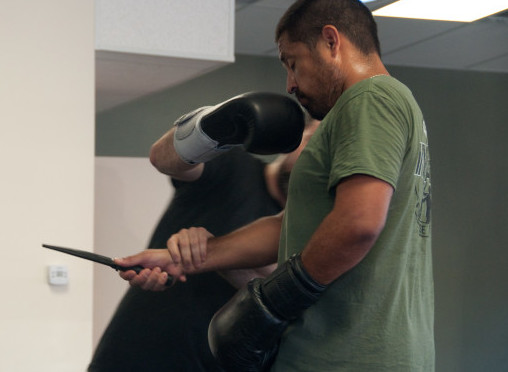

Sparring and Fighting: Keys to Successful Training (Part 2).
Last month we began our discussion about what is expected of instructors when it comes to regulating and conducting sparring training for the students. Among the things we mentioned, safety was the number one priority. Additionally we discussed how sparring training must be progressive and logical with clearly outlined goals and instructions. It must be in line with the focus of the school’s training, and not only be centered around sport fighting principles without addressing fighting from positions of disadvantage, including dealing with weapon threats and multiple attackers. To check out the full article please see Sparring and Fighting: Keys to Successful Training (Part 1).
This month we will address what is expected of the students when participating in fighting and sparring classes. To ensure the best training experience, both the students and the instructors have roles and responsibilities in order to maintain a good and safe learning environment. Below are the six most essential principles that we think are important for each student to maintain when participating in sparring classes.
- Leave the ego out of training
This is true when sparring or participating in any other classes at the school. Ego has no place in training. Sparring is about getting hit and learning from your mistakes, not getting angry at your partner and trying to hit him harder. This type of behavior clouds your judgment, doesn’t let you focus on the objective of the class, prevents you from learning and developing, and creates safety concerns for the class. Remember, sparring is not about winning or losing, it’s about getting better and helping your partner get better.
- Follow the directions of each drill
Many sparring drills we design are such that one partner is more vulnerable at one time than the other to help with identifying and capitalizing on the created openings. This means that at one point of the drill you will get hit more often than your partner and when the roles are switched your partner will be more vulnerable then you. This is the learning stage of sparring and it is up to the students to follow the instructions of each drill to ensure that both you and your partner are getting the best training possible in a safe and enjoyable manner, without deviating from the set directions.
- Work safe with reasonable force and speed
Safety is always the number one priority in training. Even in free sparring drills, where restrictions on the roles of each partner are minimal, safety must be maintained. This means that students need to always work at a reasonable pace and force that will not cause injury to you or your partners. The best rule is to work at no more than 50% pace and power of the least experienced and smaller partner, unless otherwise instructed. The pace and power of the sparring session should be such that lets both parties work on various aspects of fighting without getting too overwhelmed by the stress of the exercise. Of course with more experience and training the intensity will be amplified, but safety must always be the priority. If you feel that your partner is getting too overwhelmed, slow yourself down and let your partner catch up. Remember that training is not about winning or losing, but about improving and letting others improve with you.
- Stick to the basics
The best competitive fighters are those that are the most disciplined. They have the best footwork, best striking mechanics, good defenses, their hands stay up, etc. And by sticking to these basics they excel in their competitions. For us it’s no different, a strong solid foundation is a key to good fighting. So when training, focus on the fundamentals. Make sure your hands stay up, maintain proper stance and footwork, look through your partner’s chest, strike well, and keep to the simple principles you learn in class every day.
- Set goals for your sparring session
During the free sparring session, try to experiment and improve upon the things you learned in class. It’s a great opportunity to train a particular skill set under a bit more stress and with some level of resistance from your partner. For example, you can focus on being a more offensive fighter. Or improve upon your counterstriking abilities by fighting a bit more defensively. Or take the time to simply improve your jab or hook, or cross or a particular combination. And in the meantime, don’t forget to maintain the basics and stick to the principles of Krav Maga.
- Don’t get discouraged
Learning how to fight is a continuous process. And no one is perfect at it. We are all trying to get better at it every chance we have. Getting hit is part of the leaning process. It tells us we made a mistake and we need to fix it. But it is not failure, and it should never be treated as such. Think of it this way, in a boxing match a losing fighter may have been hit with 40-50% of strikes thrown by the opponent, versus the winning fighter may have been hit with only 20% of the strikes thrown. But both competitors got hit plenty of times. Granted Krav Maga fighting is not a 36 minute bout, but you can expect to be hit a few times. The goal is to minimize the number of times it happens by learning from your mistakes and striving to fix them. And you’ll notice that with time you’ll make less and less of the same errors, and will see great improvement in your fighting abilities.
